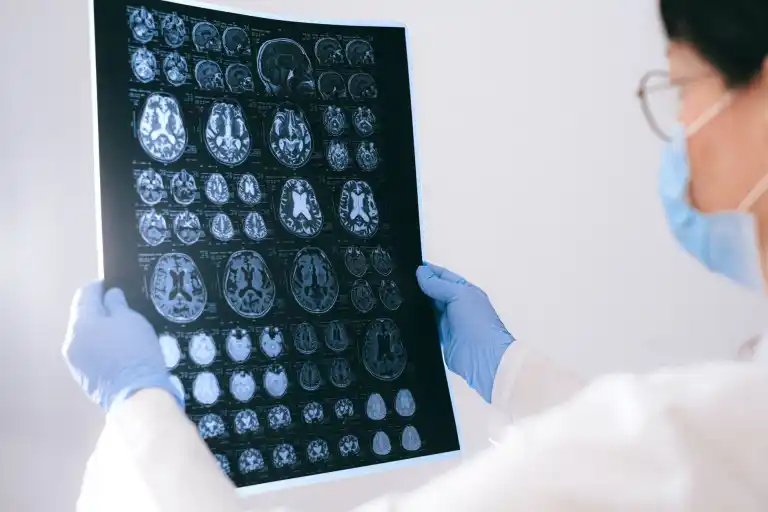Written by Stephanie Coffin Edited by Dr. Brenda Toscano
Ataxin-1 may not be the only protein important in driving neurodegeneration in SCA1
Why does a protein that cause disease only cause toxicity in specific regions of the brain, despite being in all cells of the body? This is the question authors attempt to answer in this article, with a focus on spinocerebellar ataxia type 1 (SCA1) and the disease causing protein, Ataxin-1. SCA1 is a polyglutamine expansion disorder, meaning patients with the disease have a CAG repeat in the ATXN1 gene that is larger than that of the healthy population. This mutant allele is then translated into a mutant protein, causing SCA1. Ataxin-1 protein is expressed throughout the entire brain, however, toxicity (cell death and problems) is mainly restricted to neurons of the cerebellum and brainstem. This phenomenon is called “selective vulnerability” and refers to disorders in which a restricted group of neurons degenerate, despite widespread expression of the disease protein. Selective vulnerability occurs in many diseases, including Alzheimer’s, Huntington’s, and Parkinson’s disease and is currently under investigation by many scientists in the field of neurodegeneration.
In SCA1, this selective vulnerability can be narrowed further in the cerebellum. The cerebellum is broken down into lobules (I-X), with lobules II-V described as the anterior region and lobules IX-X as the nodular zone. Studies have previously shown cerebellar Purkinje cells to be particularly sensitive to mutant ataxin-1, and within the cerebellum, neurons in the anterior region degenerate faster than those in the nodular zone. This paper wanted to understand the mechanism of this interesting biology, hypothesizing that there are genes whose are expressed mainly in these zones could correlate with the pattern of Purkinje cell degeneration. To this end, the authors used the mouse model ataxin-1 [82Q], which overexpresses human ataxin-1 with 82 CAG repeats specifically in cerebellar Purkinje cells.

First, the authors confirmed the finding that neurons from the anterior region of the cerebellum degenerate earlier than those in the nodular zone. They did this by assessing the health and number of Purkinje cells, which indeed appeared to be better in the cells located in the nodular zone. Next, techniques assessing expression of RNA in SCA1 and control cerebellum, showed that there are a number of genes which are uniquely dysregulated in the anterior cerebellum of SCA1 mice. Neurons function and communicate with each other via ion channels, and interestingly, the genes found to be dysregulated in the anterior cerebellum of SCA1 mice were related to ion channel signaling.
What could be driving the dysregulation of these ion channel genes, disproportionally in one region of the cerebellum? Ataxin-1 is known to interact with a transcriptional repressor, Capicua. Studies have shown that reducing the interaction of ataxin-1 and capicua in the Purkinje cells of the cerebellum rescue SCA1 cerebellar phenotypes, however the mechanism for how this occurs is unknown. The authors hypothesized that the altered ion channel signaling could be mediated through capicua. By quantifying RNA levels of capicua in various regions of the cerebellum, they found increased levels of capicua in the anterior cerebellum, and lower levels in the nodular zone. As CIC is a transcriptional repressor, it makes sense that capicua levels inversely correlate with expression of the ion channel genes. This data suggest that the regional vulnerability seen specifically in Purkinje cells may be regulated by capicua levels. To confirm this, the authors conducted one further experiment. Here, they overexpressed capicua using a viral system in various regions of the cerebellum. They found that modest overexpression of capicua could increase the rate of degeneration in the cerebellar regions they injected with capicua.
These findings are very interesting, as they confirm previous data showing that the anterior cerebellum is more vulnerable to mutant ataxin-1, and that capicua is important in driving toxicity in the cerebellar Purkinje cells. What is particularly special about this study, however, is that it links these two findings, and for the first time, describes a mechanism for the regional vulnerability seen in SCA1 cerebellar Purkinje cells. With the knowledge that mutant ataxin-1 and capicua levels are important in driving cerebellar disease, scientists can work towards designing effective therapeutics. This is not only important for SCA1, but will also inform the study of other diseases in which selective vulnerability is seen.
Key Terms
Regional vulnerability: Refers to disorders in where certain types of cells degenerate (get sick, don’t work properly), despite the mutation causing disease being in all cells
Cerebellar lobules: The cerebellum is broken down into ten anatomical lobules, described by Roman Numerals I- X. This is a way scientists and doctors can describe what happens in certain parts of the brain.
Transcriptional repressor: This is a specific type of transcription factor. They are proteins that bind to DNA and controls the rate of transcription, or its conversion to RNA. A transcriptional repressor decreases the amount of RNA transcribed from its target DNA. This means less protein is made. You can learn more about this process in our Snapshot on Genes.
Conflict of Interest Statement
The author and editor declare no conflict of interest.
Citation of Article Reviewed
Chopra, R., et al., Altered Capicua expression drives regional Purkinje neuron vulnerability through ion channel gene dysregulation in spinocerebellar ataxia type 1. Human Molecular Genetics, 2020. (https://pubmed.ncbi.nlm.nih.gov/32964235/)










